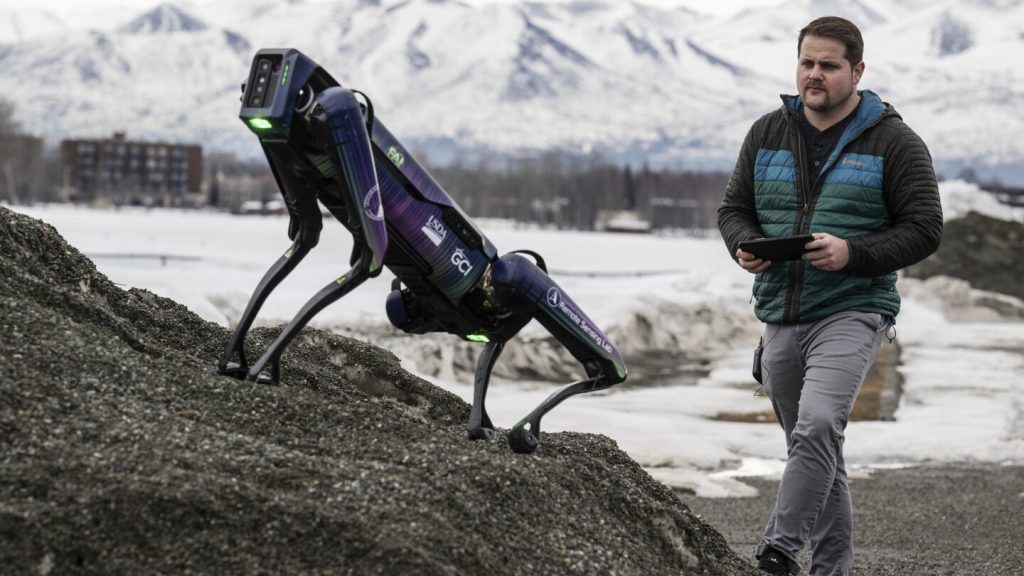Alaska’s second largest airport, the Fairbanks airport, is set to introduce a unique wildlife deterrent in the form of a headless robot named Aurora. The robot, about the size of a labrador retriever, will be disguised as a predator such as a coyote or fox to ward off migratory birds and other wildlife that pose a threat to aircraft safety. Aurora will patrol an outdoor area near the runway every hour during the migratory bird season, using its predator-like movements to keep wildlife away from the plane infields. The goal is to prevent harmful encounters between planes and wildlife, ultimately enhancing safety and operations at the airport.
The Alaska Department of Transportation and Public Facilities decided to use a robot as a deterrent after rejecting a plan to use flying drones spraying a repellent including grape juice. Other past efforts to keep wildlife away from airports have included releasing pigs near plane landing areas in the 1990s. Aurora’s effectiveness will be tested not only with birds but also with larger animals such as moose and bears. Aurora, which can be controlled remotely and is equipped with replaceable panels to change its appearance, cost about $70,000 and was paid for with a federal grant. If successful, similar robots could be sent to smaller airports in Alaska, providing a cost-effective alternative to hiring human deterrent teams.
According to program manager Ryan Marlow, the main purpose of Aurora is to act as a predator and invoke a response in wildlife without the need for more intrusive methods. The robot will mimic predator-like movements and patrol the area near the runway to keep wildlife away during the migratory bird season. Previous wildlife deterrent efforts at Alaskan airports have included using loud noises and paintball guns to scare off birds and other wildlife. In 2018, there were 92 animal strikes near airports across Alaska, highlighting the need for effective wildlife mitigation measures to prevent expensive and potentially dangerous encounters between wildlife and aircraft.
Fairbanks airport is leading the country in wildlife mitigation efforts through the use of Aurora, a robot designed to keep birds and other wildlife away from the runway during critical times such as the migratory bird season. The hope is that Aurora will be an effective deterrent not only for birds but also for larger animals like moose and bears. By introducing innovative solutions like Aurora, the transportation department aims to enhance safety and operations at the airport while also saving costs compared to traditional wildlife deterrent measures. The robot can navigate through various weather conditions and will always have a human handler with it to ensure proper control and supervision.
Overall, the introduction of Aurora at the Fairbanks airport represents a step towards utilizing advanced technology to address wildlife safety concerns in the aviation industry. By employing a robot as a predator-like deterrent, the airport hopes to reduce the risk of bird strikes and other wildlife encounters that can lead to costly damages and safety hazards. If successful, this innovative approach may pave the way for similar initiatives at other airports in Alaska and beyond, demonstrating the potential of robotics in enhancing aviation safety and efficiency. With Aurora’s unique abilities and cost-effective implementation, the transportation department aims to set a new standard for wildlife mitigation at airports, ultimately creating a safer environment for both planes and wildlife.


